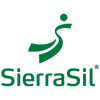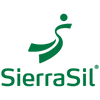Blog
I get asked often if SierraSil really works. To answer this, I talk about our clinical trials and research into SierraSil. This often results in glazed eyeballs and a quick nod of the head. I understand this, not everyone gets...
Continue reading
We care deeply about your joint health and mobility. This means we spend a lot of time thinking about, researching, and discussing the best ways to achieve and maintain flexible, mobile, and healthy joints. If you browse our blog you’ll...
Continue reading
You know that exercise is key to helping you build a strong, flexible and mobile body. Along with eating a balanced diet, getting adequate sleep, and avoiding smoking – a daily exercise habit is one of the best things you...
Continue reading
You wake up in the morning and your knees are creaky and sore. You have noticed swelling and redness around your wrists and knees. You feel like your knees and fingers don’t move as easily as they once did. These...
Continue reading
Fibromyalgia is a chronic condition that causes muscle pain, fatigue, pain sensitivity, and joint discomfort. This common condition is type of arthritis that is easily missed and not thoroughly understood. As the second most common condition impacting the health of...
Continue reading



